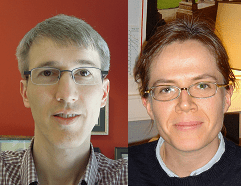
Brien Nolan is a Senior Lecturer in the School of Mathematical Sciences, Dublin City University
Black holes have a potential technological application that is frequently overlooked: they allow you to look at the back of your own head. This could be useful for checking that your tie is properly tucked into your shirt collar, or – perhaps more relevant for physicists – that your pony tail is straight. This technology relies on the fact that there exist circular photon orbits in all members of the Kerr-Newman-de Sitter family of spacetimes for which the parameters (mass, charge and cosmological constant) correspond to a black hole.
The question arises as to whether this characteristic feature of electro-vac Continue reading






You must be logged in to post a comment.